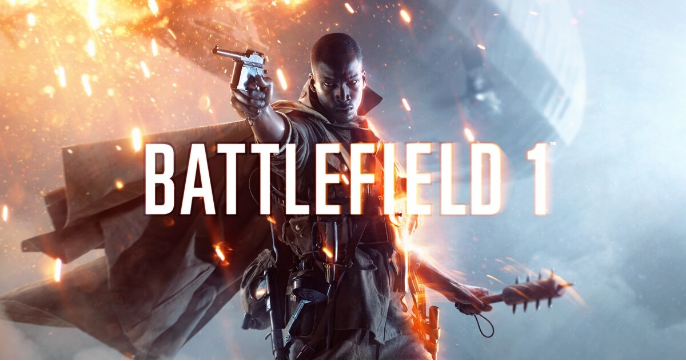Battlefield 1’s Historical Glitches
January 31, 2017
Sylvain Falquet and Joshua Jones
Over the past several weeks, EA DICE’s new first person shooter (FPS) Battlefield 1 has taken the gaming community by storm. This new entry in the widely-popular Battlefield video game franchise takes players back in time to the Great War, better known as World War I. Gone are the drones, lasers, and mech suits found in most modern FPSs; Battlefield 1 introduces the gamers to a war of tanks, gas grenades, and bayonets. With its solid shooting mechanics, map design, sound, beautiful graphics, and surprisingly strong single player mode, Battlefield 1 is well-deserving of it critical and financial success. Modern video games, for the most part, have been about fast-paced gameplay, so it is odd to think that such a tragic and slow-paced war would be such a success story in today’s gaming ecosystem. EA DICE disposes of the stagnant trench warfare for gameplay more appealing to modern audiences.
In fact, the fast-paced infantry gameplay with special weapons and equipments in Battlefield 1 is akin to the real-life special forces units from both sides during World War I. One example of a weapon from the Great War that is included in the game is poison gas. If a gas grenade is used during combat in the game, the player’s screen becomes slightly distorted and they begin taking damage until they put on a gas mask, which takes away the ability to aim and it reduces sight, just like in real life. Additionally, the Great War is known for its bolt action rifles with bayonets, making the inclusion of so many automatic guns in Battlefield One astounding. That’s not to say there aren’t any bolt action rifles in the game – this type of gun dominates the Scout Class with weapons such as the SMLE MK III Marksman, Gewehr M.95, and the M1903 Marksman. Regardless, the three other classes (medic, support and assault) have multiple machine and sub-machine guns, the prime offender being the assault class. The assault class focuses on dealing heavy damage to enemies in a short period of time, wielding the MP 18 Trench (image seen below), the Automatico M1918 Factory, and more historically realistic M97 Trench Gun Hunter and Model 10-A Hunter shotguns, all of which were developed during the war, just not used to the extent that Battlefield 1 may lead players to believe. Additionally, the developers of Battlefield 1 added to the names of weapons, with terms such as “Trench”, “Factory”, and “Marksman” serving as indicators of in-game functions for the weapons, as opposed to historically appropriate names.
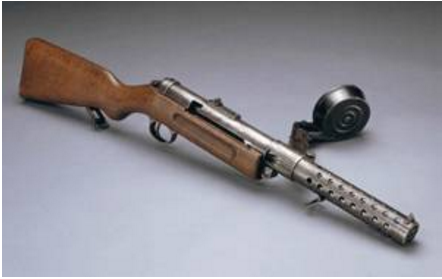
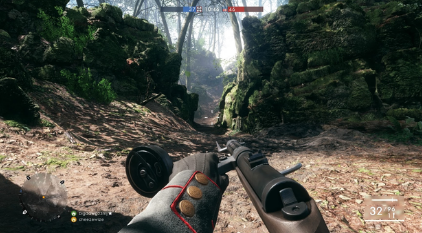
A major part of the gameplay in the Battlefield franchise are vehicles, and it is not lacking in historically accurate tanks, armored trains, zeppelins, dreadnoughts, and planes. Although not a vehicle simulator, Battlefield 1 represents these vehicles realistically in their appearances and performances. For instance, the A7V tank (as pictured below), a heavy tank with one driver and up to five gunners, appeared in World War I and is appropriately represented in the game. One fault that can be stated is that in multiplayer battles, vehicles may be available too often. This kind of technology was not developed until close to the end of the war and therefore were relatively rare. For example, only around 300 tanks were used in World War, but it is commonplace to see one the battlefield of the game.
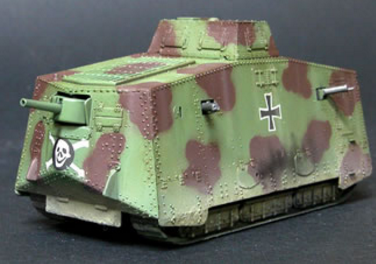
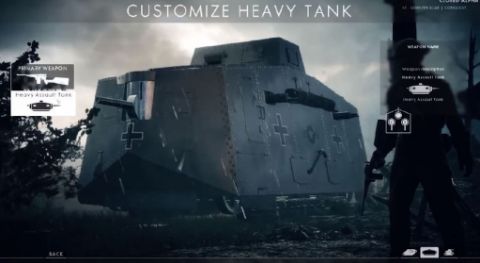
Battlefield 1 features several multiplayer maps with historical regions where major battles were fought, like the Argonne Forest map, which was the sight of the final allied Meuse-Argonne offensive, which went on from September 26, 1918 until the Armistice of November 11, 1918. The main combatants in this area were the AEF (American Expeditionary Force) and Germany, which the game accurately represents. Trench warfare was the norm for almost the entirety of the war’s four years, with generals sitting miles behind the lines, sending thousands of soldiers from their trenches into the artillery blasted “no man’s land”. But overall, there are very few trenches on the Argonne Forest map. The same can be said for the eight other maps featured, with the game focused mostly on fast-paced urban combat, which actually occurred very rarely. One map that features mostly urban combat is Ballroom Blitz, a battle between the United States and the German empire, based on the Meuse-Argonne Offensive, that is unrealistically fought in a chateau with beautiful chandeliers and intricate designs. In addition, armored trains, a major part of several maps including Argonne Forest, were rarely, if ever, used in WWI. Zeppelins, also on several maps, were actually used in bomber and reconnaissance roles, but they would be high enough in the air that bullets and even early aircrafts couldn’t reach them, whereas in the game even ground units can shoot the Zeppelin down.

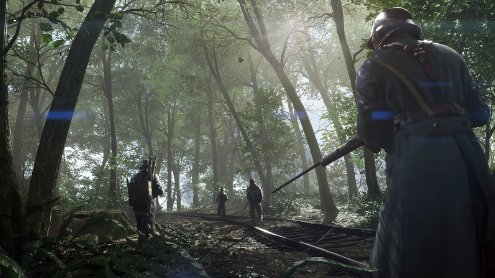
Battlefield 1 depicts the six armies throughout World War 1, with more to come in future updates, like the French Army DLC coming out within a year. In multiplayer matches, soldiers bark commands in their native languages, as opposed to just English. In the single-player mode characters speak English, but this can be excused as they are attempting to tell a coherent story. Additionally, tasked with the job of making a game represent a rarely-covered historical era in the in the video game industry, DICE does a very good job representing the often-complex uniforms of the many nations and their colonial territories involved in World War I. Despite a few misplaced buttons here and there, the uniforms are accurate for 1918. Especially impressive is the accuracy with which DICE showcases little-known troops in video games, such as the troops of British Colonial India and Ottoman Empire, appealing to history buffs everywhere.
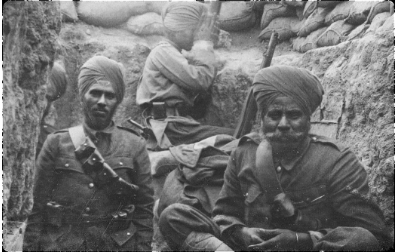
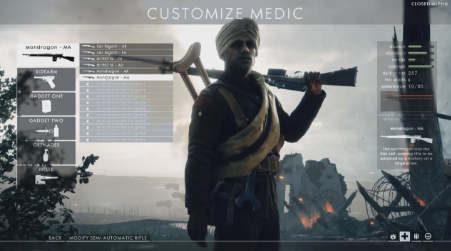
Though not perfect, the single-player campaign of Battlefield 1 offers one of the most historically-accurate World War I experiences of any video game. The story-driven missions span the same regions as their multiplayer counterparts, but have certain events realistic, to the era, that would be out of place in an online shooter. One example is engine failure or weapon malfunction. In real life, weapons and vehicles would often malfunction because of the harsh environment they were in, causing, for example, mud getting inside a gun, or just in cases of random bad luck. Random elements like these are despised in the multiplayer gaming community, as they lead to a luck-based game as opposed to skill-based. However, the Battlefield 1 single-player uses scenes where the player’s tank or plane engines fail in order to make a more intense, realistic story.
Additionally, developers at EA Dice created a tone that perfectly encapsulates the feelings and emotions of World War I. War is horrific and brutal, but few have been worse than World War I, and the single-player campaign doesn’t shy away from death. It takes death very seriously, best represented by the game’s opening moments. The player is taken to a tutorial level, teaching them all of the mechanics of the game, as well as the sadness of the era. They are told that “What follows is frontline combat. You are not expected to survive,” after watching a soldier from the Harlem Hellfighters suffering from flashbacks of men being punched to death, bludgeoned with rocks, hit with shovels and maces, as well as stabbed with bayonets. With each death, a name appears, followed by their year of birth, and then the year of death: 1918. Although the names are fictitious, these moments are eery. Throughout missions players can find journals detailing events from the past, and in certain sections are shown facts about the era related to the mission they were playing. In these missions players take up roles of soldiers in real groups, such as the Arditi, German Storm troopers, and Harlem Hellfighters. The Arditi were special Italian troops who were selected for bravery and recklessness to participate in daring raids, and were the first to break through to the enemy in a major offensive. Because of these tactics, they suffered high casualty rates. The German Storm troopers were special units developed in the last years of the war with very good small-unit training, meaning they could operate without a general telling them what to do. They pioneered special raiding tactics that are even studied today. The Harlem Hellfighters were an almost-entirely African American unit in the American Expeditionary Force, named such for their origins in Harlem, New York City, and extremely tough fighting abilities, with not a single soldier being captured and never losing a trench or a foot of ground to the enemy. Additionally, across the multiplayer and single-player modes, random facts are given. All of these showcase the deep respect the developers have for this time period.
Despite some historical flaws in its depiction of World War I, Battlefield 1 is still a success. Video games are made for entertainment, and to be quite honest, if the game were to be made more realistic, many of the qualities that make Battlefield 1 such a great game would be lost. In an interview conducted by Motherboard, Senior Producer of DICE Aleksander Grøndal said: “We’re not trying to create a documentary about that era. We’re trying to make a game, it’s supposed to be fun first so, of course, we’re going to take some creative liberties where we can.”. Instead of using weaponry that was standard issue, or vehicles appropriate for that specific battle in the game, weapons and vehicles that were developed during the era and could’ve been utilized were given to players to make a great Battlefield game as opposed to a World War 1 simulation. Nevertheless, the campaign, some of the traditional weapons used in the war, and even little facts displayed while waiting for a game to load offer a learning experience about World War 1 on a scale that hasn’t been achieved before.

